
A space habitat may contain many different elements. Future astronauts need access to food, water, breathable air, sleep, power, work stations and many more. Here are some examples of elements that could be part of your space habitat.
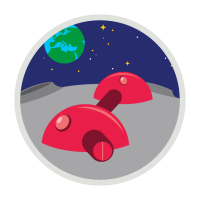
A place for the astronauts to sleep, work, exercise and seek protection. This is the homebase for the astronauts.
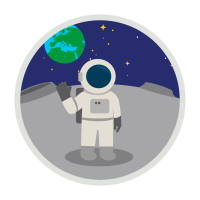
For the astronaut to safely leave the homebase, they will need a space suit that protects them against the challenging environment of outer space
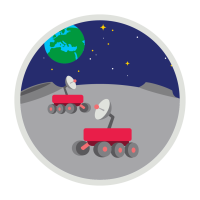
Rovers and other robots may assist astronauts in work-related tasks or to safely transport astronauts to other locations while avoiding obstacles.
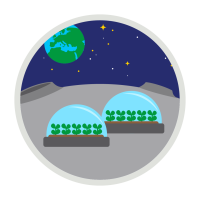
Astronauts need food and and oxygen. Through bioregenerative techniques such as hydroponics, astronauts can grow food and produce oxygen.
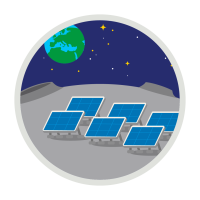
A space habitat is dependent on power for many different aspects such as for machinery, environmental control, communication and much more.
Human space exploration is an extraordinary challenge. Humans are not naturally suited to the severe conditions of space. Every time astronauts and spacecraft venture beyond Earth’s thin protective atmosphere, they are subjected to:
In space, temperatures can vary from several hundred or even thousands of degrees Celsius to nearly absolute zero.
Far away from Earth’s magnetosphere astronauts may be at significant risk for radiation sickness
On Earth we only need to worry about large meteorites impacts. In space even the smallest piece of debris can have a catastrophic impact.
For survival in space, it is crucial for astronauts to have an environment that simulates the conditions of Earth’s atmosphere.
The Moon is our closest neighbour and a natural target for setting up a human base. The Moon is a treasure trove of Solar System history and it has great scientific potential for looking further afield such as constructing a radio telescope on the far side, offering views of our Universe protected from the constant radio emissions from Earth. Set your base on the Moon, or go deeper into the Solar System.
Surface temperature: -233°C to 123°C
Atmospheric pressure: 10-7 Pa
Atmosphere composition: Tenuous atmosphere including: helium, argon, sodium, hydrogen
Radiation: High
Magnetic field?: No
Acceleration of gravity: 1.6 ms-2
Extra information: Liquid water cannot exist on the Moon. But it is thought that water ice could be found in permanently shadowed craters at the Moon’s poles, and could be trapped beneath its surface.
Surface temperature: -153°C to 20°C
Atmospheric pressure: 600 Pa
Atmosphere composition: Carbon dioxide, nitrogen, argon
Radiation: High
Magnetic field?: No
Acceleration of gravity: 3.7 ms-2
Extra information: Has water ice at the poles and at the south polar region a pond of liquid water has been detected under layers of ice and dust.
Surface temperature: -180°C to 430°C
Atmospheric pressure: 10-7 Pa
Atmosphere composition: Tenuous atmosphere inclu- ding: hydrogen, helium, oxygen, water vapour
Radiation: High
Magnetic field?: Yes
Acceleration of gravity: 3.7 ms-2
Extra information: Despite the high temperatures the planet endures during the daytime, it might be cold enough deep inside craters at its poles for water ice to be present.
Surface temperature: 470°C
Atmospheric pressure: 9.3 MPa
Atmosphere composition: Carbon dioxide, nitrogen
Radiation: Low
Magnetic field?: No
Acceleration of gravity: 8.87 ms-2
Extra information: Has a toxic and heavy atmosphere almost entirely made up of carbon dioxide. A thick layer of cloud surrounds the planet, of which the upper part consists mostly of tiny sulphuric acid droplets. At the surface, the atmospheric pressure of Venus is more than 90 times greater than the Earth’s.
Surface temperature: -179°C
Atmospheric pressure: 146.7 Pa
Atmosphere composition: Nitrogen, methane
Radiation: Low
Magnetic field?: No
Acceleration of gravity: 1.35 ms-2
Extra information: Has clouds, rain, rivers, lakes and seas of liquid hydrocarbons, such as methane and ethane.
Surface temperature: -201°C
Atmospheric pressure: –
Atmosphere composition: –
Radiation: High
Magnetic field?: No
Acceleration of gravity: 0.113 ms-2
Extra information: Thought to have hydrothermal vents that sprew out mineral-rich water into an ocean that lies beneath its icy surface.
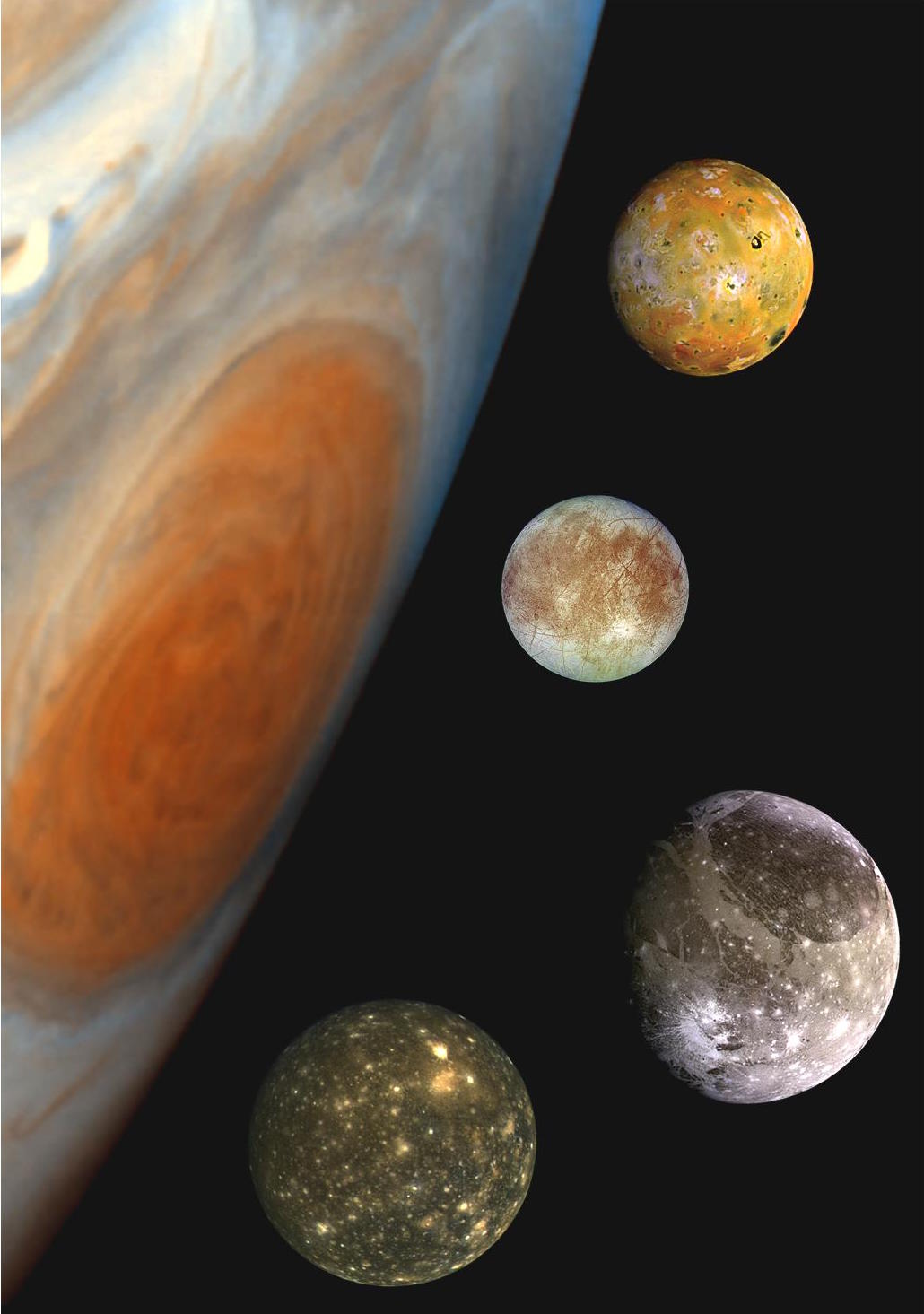
This ‘family portrait’ shows a composite of images of Jupiter, including it’s Great Red Spot, and its four largest moons. From top to bottom, the moons are Io, Europa, Ganymede and Callisto. Europa is almost the same size as Earth’s moon, while Ganymede, the largest moon in the Solar System, is larger than the planet Mercury.
While Io is a volcanically active world, Europa, Ganymede and Callisto are icy, and may have oceans of liquid water under their crusts. Europa in particular may even harbour a habitable environment.
Surface temperature: -223°C to -108°C
Atmosphere composition: Io has a thin sulfur dioxide atmosphere, Callisto has a very thin carbon dioxide atmosphere, both Europa and Ganymede have tenuous oxygen atmospheres.
Radiation: High
Magnetic field?: Ganymede is the only moon in the Solar System with a magnetic field
Acceleration of gravity: 1.2 to 1.8 ms-2
Examples of space vehicles used to transport astronauts and cargo to Low Earth Orbit and the Moon.
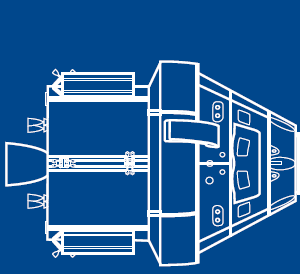
Orion is NASA’s next spacecraft to send humans into deep space. It is designed to send astronauts farther into space than ever before, beyond the Moon and to asteroids. ESA has designed and is overseeing the development of the European Service Module (ESM), the part of the spacecraft that supplies air, electricity and propulsion.
Five Automated Transfer Vehicles delivered more than 31 500 kg of supplies over the course of their missions to the International Space Station from 2008 to 2015. They boosted the Station to raise its orbit numerous times and similarly moved it out of the way of space debris.
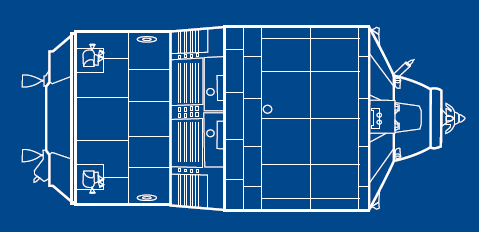
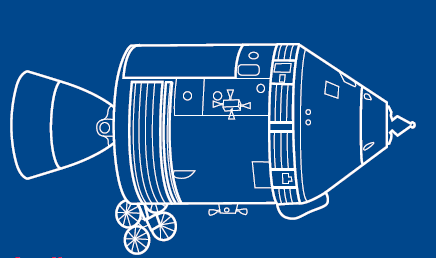
The Apollo spacecraft carried the first people to the Moon over 50 years ago. A complete lunar landing mission configuration was composed of the Apollo Command and Service Modules, plus a Lunar Module. The Command Module housed the crew and Service Module provided the propulsion for the lunar orbit insertion and trans-Earth burn for the return to Earth.